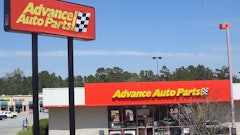
Cranbrook, British Columbia — For autobody repair facilities in British Columbia’s East Kootenays, humanity and nature often find themselves at a crossroads—unfortunately, sometimes it is a literal crossroads where the human ends up in a nasty car wreck and an innocent animal is left injured.
Steven Johnson, an estimator at Cranbrook, B.C.’s Rocky Mountain Collision for the past four years, told Collision Repair that accidents involving wildlife, especially deer attempting to cross busy roadways, are a part of the daily repair routine for the shop.
“I’d say the majority of the work we get here is from wildlife collisions and about 90 percent of them are deer,” said Johnson.
Data from ICBC, collected as recently as April 2, shows that B.C. averages about four fatal wildlife-related crashes per year, often happening under the cover of night and fast enough to catch even the most defensive driver unaware.
In an attempt to mitigate these sorts of collisions, the B.C. government announced plans on Tuesday to erect a wildlife fence along the region’s stretch of Highway 3, in order to create safer corridors for animals to cross busy roads.
Comprising six phases in total, the first phase of the government’s plan is to install about four kilometres of fencing east of Sparwood, a small town located along the Alberta border.
The fences will be used to guide animals to landscaped highway underpasses where they can cross safely. The press release announcing the plan claims that similar projects have been shown to reduce wildlife collisions by 80 to 90 percent.
The government chose this particular location to begin their project as it has been found that this section of Highway 3 sees more large animal (elk, deer, moose, bears) collisions than elsewhere in the province.
Some working in the collision industry, including Johnson, feel that the fence may do some good, but worry that the cost of such a large fence may outweigh the benefit. Others expressed concern that, while public safety is obviously important, repairing damage caused by collisions with animals makes up a fair amount of business for facilities in the area and this news may come as bittersweet for some shop owners.
Although a highway collision with an animal is likely to be far more severe due to the higher rate of speed, Johnson says that lower speed collisions with animals in town are just as common.
“I’ve driven Highway 3 more times than I can count and I could see it helping I guess, but I don’t know how much,” said Johnson. “A lot of the deer hits we get are from here in town.”
The contract to construct the fence was awarded to Wilco Contractors Southwest Inc. for $644,950. Construction is scheduled to begin in late August and wrap up by early fall.
Details regarding the additional five phases of the government’s plan are likely to be announced in the coming weeks.
How often do you have vehicles coming into your shop that have struck an animal? Is a fence the way to go for preventing these types of accidents? What other solutions are there for keeping friends and fauna safe on rural roadways?





















